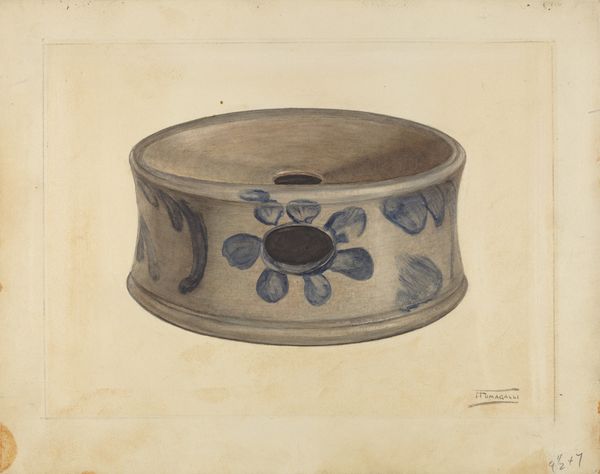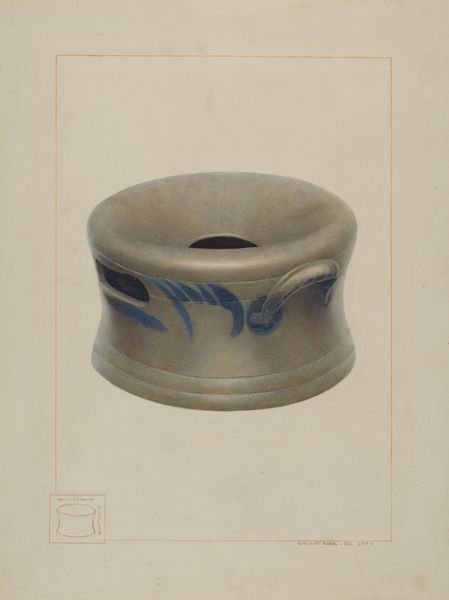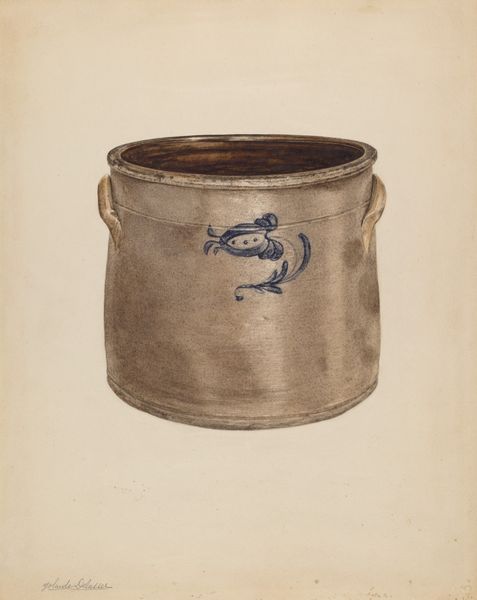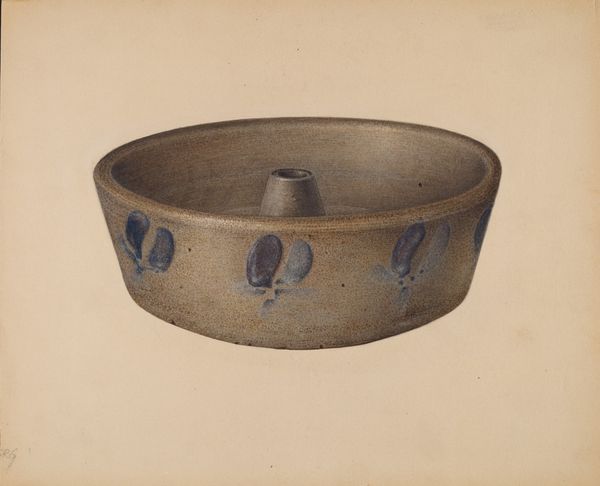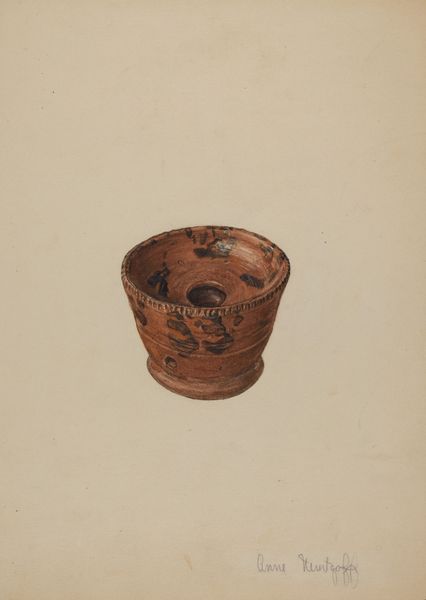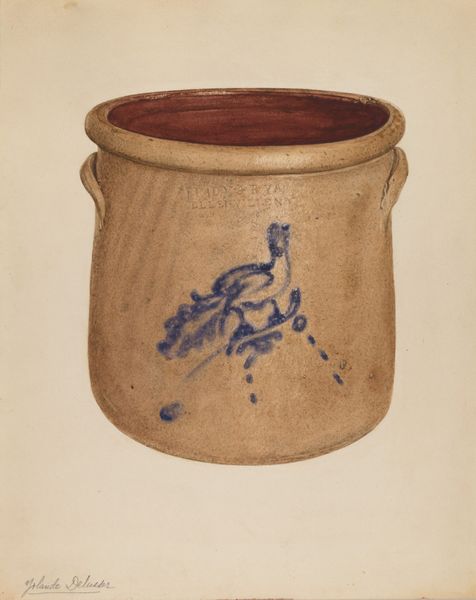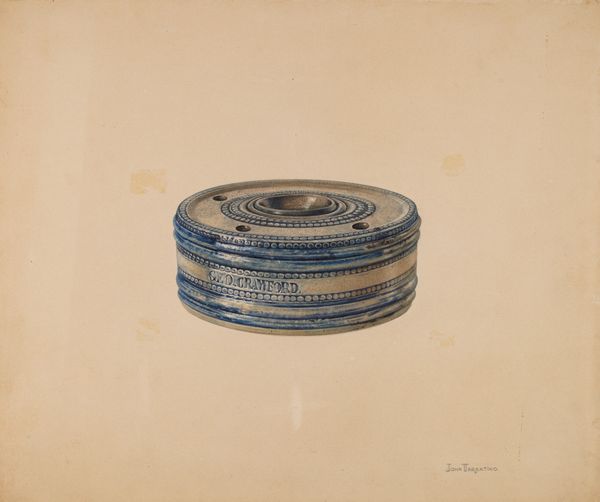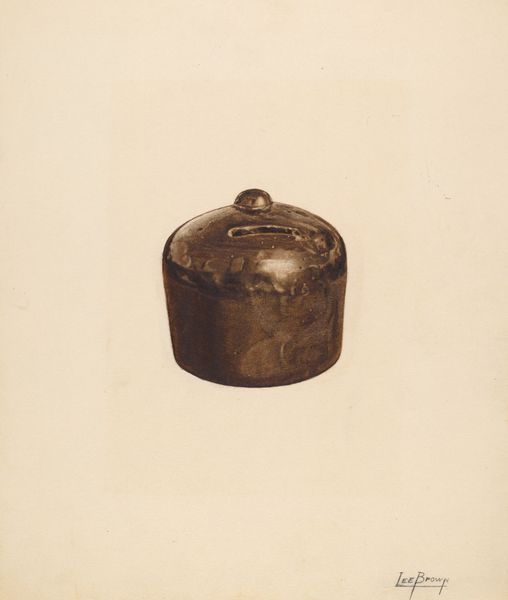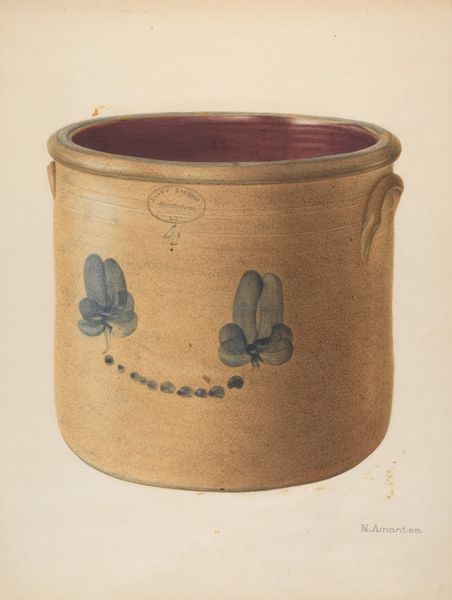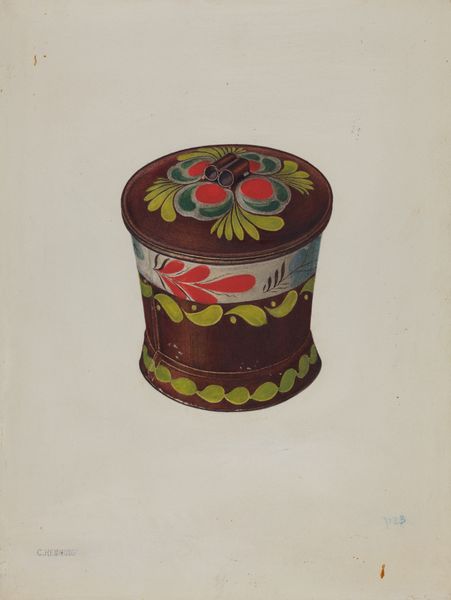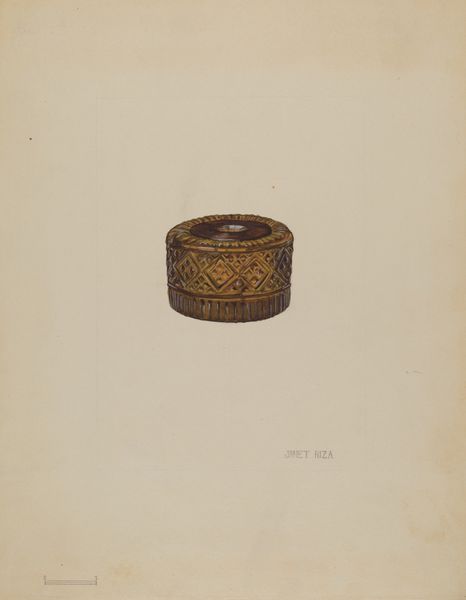
drawing, paper, watercolor
#
drawing
#
paper
#
watercolor
#
geometric
#
watercolour illustration
#
academic-art
#
watercolor
Dimensions: overall: 37.9 x 30.3 cm (14 15/16 x 11 15/16 in.)
Copyright: National Gallery of Art: CC0 1.0
Editor: This is Giacinto Capelli's watercolor drawing, "Cuspidor," from 1940, rendered on paper. The meticulous depiction makes it seem so tangible. How would you interpret this from a historical viewpoint? Curator: The Cuspidor, or more commonly known as a spittoon, wasn’t just a practical object; it was deeply embedded in social norms, particularly in the 19th and early 20th centuries. Its presence signifies a cultural landscape now largely vanished, a time when tobacco use, especially chewing tobacco, was commonplace and socially acceptable, even in public spaces. Consider where these objects were placed - courtrooms, hotels, even churches. Where do you think we would be most likely to see it today? Editor: Maybe in a museum or an antique shop? So, this drawing then documents a social artifact, something once incredibly common, now practically obsolete. Curator: Exactly! The act of creating academic art of it elevates a mundane object, prompting reflection on evolving social behaviors and public health concerns that led to its decline. It's interesting that the artist chose to render it with such detail and care. How does this careful illustration affect your interpretation? Editor: It makes me think about how everyday objects, even those considered unglamorous, carry cultural significance. Curator: Precisely. This watercolor reminds us of the powerful role art can play in preserving the material culture and unspoken rules of past societies, prompting us to re-evaluate our own. Editor: This has totally changed how I view these old objects. It is less about the object, more about its relationship with society. Curator: And, how art itself plays a role in shaping and recording that relationship!
Comments
No comments
Be the first to comment and join the conversation on the ultimate creative platform.
